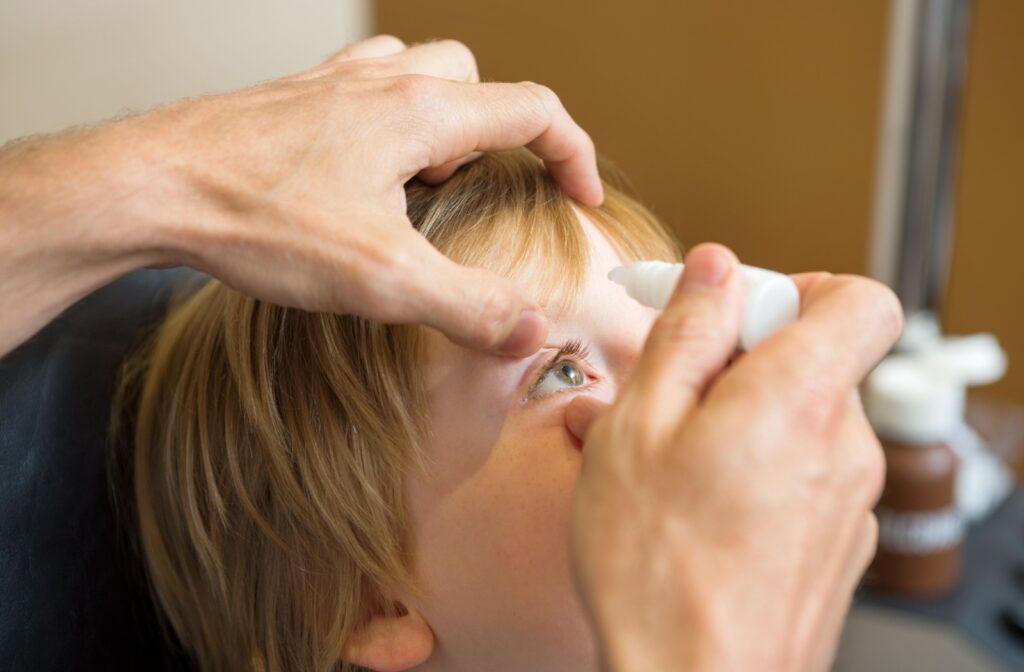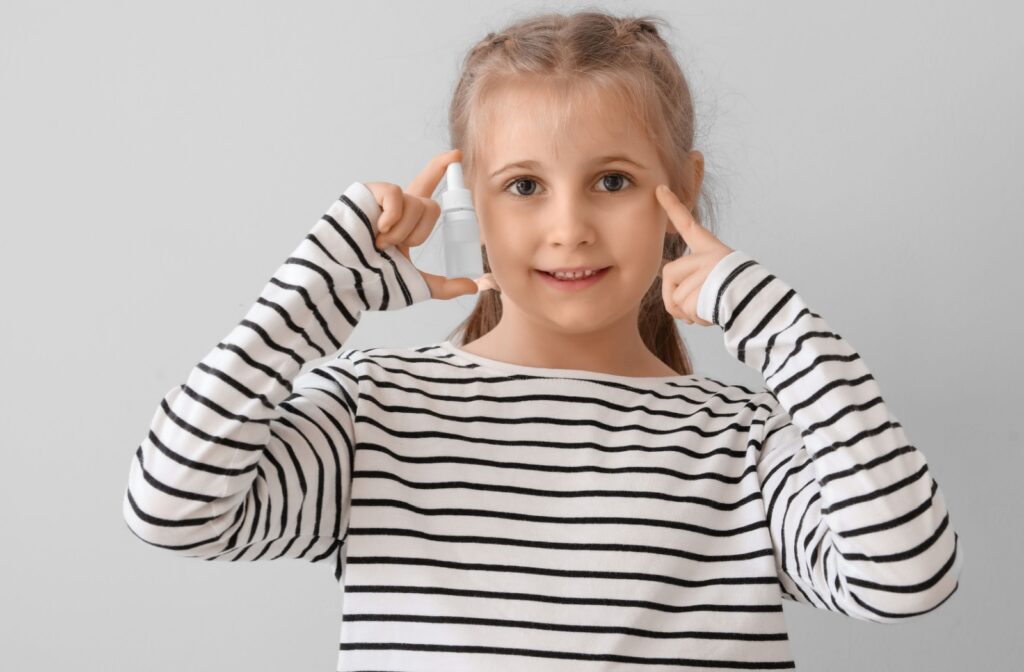As parents, your child’s health and safety are always a top priority, and this extends to their eyes. From irritation caused by allergies to infections and dryness, your child’s eyes can face a variety of challenges.
Generally, eye drops are a common and safe solution for managing many of these issues, but it’s understandable to have questions about their safety and proper use for children. If you’re unsure which eye drops are suitable for your child, scheduling an appointment with your optometrist is a great starting point.
Choosing the Right Eye Drops
Choosing the right eye drops and using them safely can significantly impact your child’s eye health and comfort. Safe options for kids include lubricating drops to soothe and hydrate dry or irritated eyes, antihistamine drops for allergy-related redness and itchiness, antibacterial drops to treat bacterial infections, and atropine drops for specialized needs like pupil dilation or myopia management.
For a more accurate diagnosis, scheduling an eye exam can help detect any underlying issues and provide an opportunity to discuss safe treatment options, whether prescription or over-the-counter.
Understanding Common Eye Conditions in Children
Children can experience various eye issues, but a few commonly require eye drops. Conjunctivitis, or pink eye, causes redness, itchiness, and discharge and may be viral, bacterial, or allergy-related. Treatment typically involves antibacterial or antihistamine drops, depending on the cause.
Styes, small and painful lumps on the eyelid caused by clogged oil glands, can often be managed with hot compresses and oral antibiotics. Blocked tear ducts, a frequent concern in infants and young children, may lead to excessive tearing and discomfort. While this condition often resolves naturally, lubricating or antibacterial drops might help in certain cases.
Foreign particles like dirt can also irritate the eye, causing redness and tearing. Lubricating drops can flush out irritants and soothe the eye, but it’s always wise to consult an optometrist to rule out corneal damage.

Types of Eye Drops for Children
When choosing eye drops for your child, it’s essential to consider their specific needs and the nature of their eye condition. Here’s a closer look at the different types of eye drops that are commonly recommended for kids:
- Lubricating eye drops
These drops are designed to add moisture to the eyes, relieving dryness and irritation caused by factors like allergies, dry air, or digital eye strain. Many lubricating drops are available in preservative-free formulations, making them a safer choice for long-term use. - Antihistamine eye drops
Antihistamine drops work by reducing the body’s release of histamines, which are responsible for allergy symptoms such as redness, itchiness, and watery eyes. These drops can provide quick relief for allergy sufferers, but it’s important to consult with your optometrist first. - Antibacterial eye drops
For eye infections caused by bacteria, such as bacterial conjunctivitis, antibacterial drops are often prescribed by an eye doctor. These drops work by targeting the bacteria responsible for the infection, helping to clear up symptoms and prevent complications. - Tropicamide and cyclopentolate eye drops
Tropicamide and cyclopentolate drops are typically used in an optometrist’s office to dilate pupils during an eye exam. These drops are not usually available over the counter and should only be used under the guidance of a healthcare professional.
Tips for Safely Administering Eye Drops to Kids
Administering eye drops to children can feel challenging, but with the right approach, it can be a smooth and stress-free process. Start by positioning your child in a comfortable and secure spot, such as lying down on a bed or sitting in a high chair. Gently pull down the lower eyelid to create a small pocket, and ask your child to look up while you dispense the drops. Alternatively, you can have your child lie down with their eyes closed, place the eye drop in the inner corner of their eye, and then gently open their eyelid to allow the eye drop to dribble into the eye.
To make the process easier, consider using distractions like a favorite toy or video to keep your child calm. It’s also important to store eye drops properly—keep them in a cool, dark place and out of reach of children. Always check the expiration date before use, as expired drops may be less effective or even harmful.
If you notice any signs of an allergic reaction, such as swelling, rash, or difficulty breathing, or if symptoms persist after a few days of treatment, contact a healthcare professional immediately.
Schedule an Appointment for Your Child
Using the right eye drops can be an effective way to manage many common eye conditions in children. However, every child’s needs are different, and professional guidance is key to ensuring their safety and comfort. At Lowy & Sewell Eye Care, we’re here to help your child see the world clearly and comfortably. Schedule an appointment with us today to discuss your child’s eye health and receive personalized care from our dedicated team.



